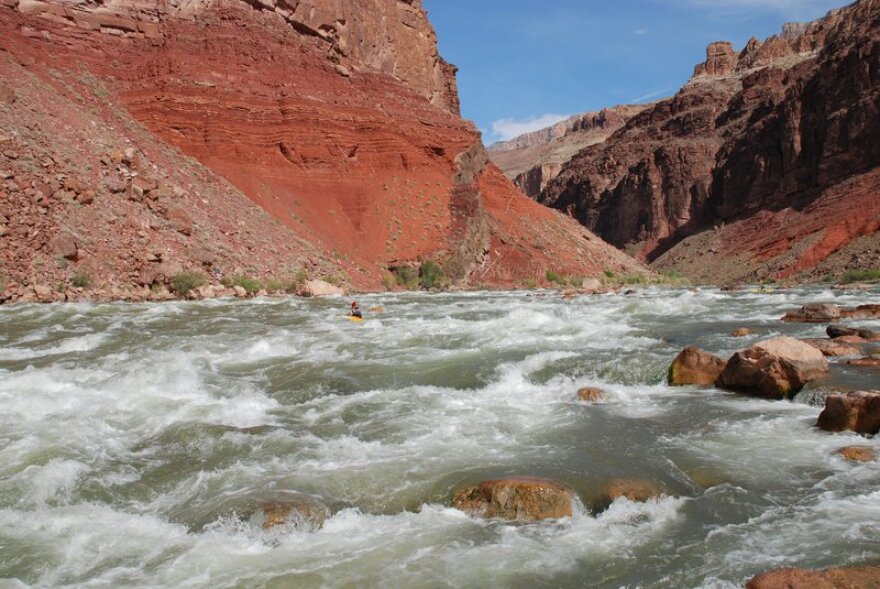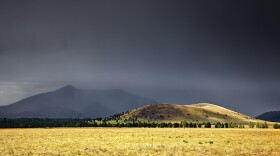It’s time for another Weather Musing with KNAU meteorologist Lee Born where he answers listener questions. And today’s is rather poetic. The question comes from Ed Peacock of Flagstaff who wants to know if his observations reading water on the Colorado River also apply to wind speed.
Ed Peacock: I live east of the Peaks, in the Koch Field part of Doney Park, where we are famous for our spring winds. I have also lived on the west side of the Peaks, where winds are light, and deep cold sometimes settles in. From observations boating in Grand Canyon, I have come to view the Peaks, Doney Park, and westerly winds, as analogous to rapids on the Colorado River. In a river rapid, there is a pool of slow moving, deep water above the obstruction causing the rapid, and then fast moving turbulent water below the obstruction. In Flagstaff, we have a pool of slow moving air “upstream” of the Peaks, and amazing winds “downstream.” Is this a reasonable analogy, or am I completely missing something fundamental? Thank you
Lee Born: Seems you are onto something. Both water and atmosphere run on the same fluid dynamic principles, so yes, it is a reasonable analogy. It all boils down to the principle of conservation of mass. What flows in must flow out.
With the river rapid example, as the river gets shallower, steeper and obstructed with rock features the water is accelerated, because the amount of water entering the top of the rapid must equal the amount coming out at bottom.
We can think of the atmospheric wind flow in and around geographical features a similar way. Prevailing westerly winds enter the San Francisco Peaks region and are forced up and over, around, channeled through gaps and canyons. All this combined with downhill gravity accelerates the wind on the lee and windy side of the mountains. If you could take a river raft along it would be quite a ride.








